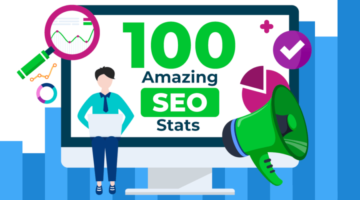From Clicks to Customers
From Clicks to Customers: Leveraging Effective SEO Strategies to Boost Your Brand’s Online Reach
In today’s fast-paced digital world, establishing a robust online presence is crucial for businesses aiming to convert clicks into loyal customers. A well-crafted web design paired with effective SEO strategies can significantly boost a brand’s visibility and engagement. By utilizing creative design elements and focusing on website optimization, companies can enhance their search engine visibility and create an inviting user experience. This approach not only elevates brand presence but also fosters meaningful customer engagement, turning casual visitors into devoted patrons. Join us as we delve into the transformative power of digital marketing and discover how you can leverage these tools to propel your brand forward. #DigitalMarketing #SEO #BrandPresence
Understanding SEO and Web Design
To effectively expand your brand’s online presence, it’s essential to understand the fundamentals of SEO and web design. These two elements work in tandem to create a powerful online presence that attracts and retains customers.
Importance of SEO Strategies
Search Engine Optimization (SEO) is the cornerstone of digital visibility. It’s the art and science of making your website more attractive to search engines, ultimately driving organic traffic to your site.
Effective SEO strategies involve a combination of on-page and off-page techniques. On-page SEO includes optimizing your website’s content, structure, and HTML elements. Off-page SEO focuses on building your site’s authority through backlinks and social signals.
By implementing robust SEO practices, you can significantly improve your website’s ranking on search engine results pages (SERPs). This increased visibility translates to more clicks, more traffic, and ultimately, more potential customers for your business.
Role of Web Design in Branding
Web design is more than just aesthetics; it’s a crucial component of your brand identity and user experience. A well-designed website serves as the digital face of your company, conveying your brand’s values and personality at first glance.
Effective web design combines visual appeal with functionality. It ensures that your site is not only attractive but also easy to navigate and use. This balance is critical in keeping visitors engaged and encouraging them to explore your offerings.
Moreover, good web design supports your SEO efforts. Fast-loading pages, mobile responsiveness, and intuitive navigation are all factors that search engines consider when ranking websites. By prioritizing these elements in your web design, you simultaneously enhance user experience and boost your SEO performance.
Enhancing Brand Presence Online
In the digital age, your online presence is often the first point of contact between your brand and potential customers. Enhancing this presence is crucial to standing out in a crowded marketplace and making a lasting impression.
Building a Strong Digital Footprint
Creating a robust digital footprint is crucial for establishing your brand’s online presence and authority. This process involves more than just having a website; it’s about strategically positioning your brand across various digital platforms.
Start by ensuring your website is optimized for search engines and user experience. This forms the foundation of your digital presence. Next, expand your reach through social media platforms that align with your target audience’s preferences.
Consistency is key in building a strong digital footprint. Maintain a uniform brand voice and visual identity across all platforms to reinforce brand recognition. Regular content updates, engaging with your audience, and participating in relevant online communities can significantly enhance your digital presence.
Creative Design Elements for Impact
Innovative design elements can set your brand apart and leave a lasting impression on visitors. These elements should not only be visually appealing but also functional and aligned with your brand identity.
Consider incorporating interactive elements, such as animated infographics or hover effects, to enhance user engagement and interaction. Utilizing white space, distinctive typography, and a thoughtfully curated color palette can significantly improve the visual appeal of your site.
Remember, creative design should never come at the cost of usability. Ensure that all design elements contribute to a seamless user experience, guiding visitors towards your desired actions while reinforcing your brand’s unique personality.
Boosting Customer Engagement
Engagement is the key to turning visitors into customers. By creating an interactive and valuable experience, you can keep users on your site longer and increase the likelihood of conversion.
Engaging User Experience Tactics
User experience (UX) is at the heart of customer engagement. A well-designed UX can significantly increase the time users spend on your site, reduce bounce rates, and improve conversion rates.
Implement intuitive navigation that enables users to find what they’re looking for quickly. Use straightforward, concise content that addresses your audience’s needs and questions. Consider incorporating interactive elements, such as quizzes, calculators, or configurators, that provide value to your users.
Personalization can also greatly enhance user experience. Utilize data-driven insights to tailor content and recommendations to individual users, enhancing their interaction with your site and making it more relevant and engaging.
Calls to Action That Convert
Effective calls to action (CTAs) are crucial in guiding users towards desired actions, whether it’s making a purchase, signing up for a newsletter, or requesting more information.
Design your CTAs to stand out visually, using contrasting colors and clear, action-oriented text. Place them strategically throughout your site, ensuring they’re visible without being intrusive.
Test different CTA variations to determine which one resonates best with your audience. This could include changes in wording, design, or placement. Remember, the most effective CTAs are those that align with the user’s current stage in the customer journey.
Maximizing Search Engine Visibility
Enhancing your search engine visibility is essential for attracting organic traffic to your site. This involves a combination of technical optimization and content strategy.
Effective Website Optimization Techniques
Website optimization is a multifaceted process that enhances both user experience and search engine rankings. Start by ensuring your site’s technical foundation is solid.
-
Improve page load speed by optimizing images and minimizing code.
-
Ensure your site is mobile-responsive for seamless viewing across all devices.
-
Implement a clear site structure with logical URL hierarchies.
On-page optimization is equally important. This includes optimizing meta titles and descriptions, using header tags effectively, and ensuring your content is rich in relevant, naturally placed keywords.
Don’t forget about local SEO if you have a physical business location. Optimize your Google My Business listing and ensure your NAP (Name, Address, Phone) information is consistent across all online directories.
Tailored SEO for Business Growth
Tailoring your SEO strategy to your specific business goals is crucial for driving growth. This involves understanding your target audience, analyzing your competitors, and identifying the keywords and topics most relevant to your business.
Develop a content strategy that addresses your audience’s needs and questions. This could include blog posts, how-to guides, or industry reports that demonstrate your expertise and provide value to your readers.
Consider implementing schema markup to help search engines better understand and display your content. This can lead to rich snippets in search results, increasing your visibility and click-through rates.
Measuring Success and Growth
To ensure your digital marketing efforts are paying off, it’s crucial to track key metrics and continuously refine your strategies based on data-driven insights.
Key Metrics for Digital Marketing
Tracking the proper metrics is essential for understanding the effectiveness of your digital marketing efforts. Here are some key performance indicators (KPIs) to monitor:
-
Organic traffic growth
-
Conversion rates
-
Bounce rates
-
Time on site
-
Pages per session
-
Search engine rankings for target keywords using tools such as Google Analytics and Google Search Console to monitor these key metrics. Regular analysis of these data points can provide valuable insights into user behavior and the performance of your SEO and web design strategies.
Remember, the most important metrics will depend on your specific business goals. For e-commerce sites, for example, tracking cart abandonment rates and average order value might be crucial.
Continuous Improvement Strategies
Digital marketing is not a set-it-and-forget-it endeavor. It requires ongoing effort and adaptation to stay ahead in the ever-changing digital landscape.
Implement a cycle of continuous improvement:
-
Regularly review your metrics and identify areas for improvement.
-
Develop hypotheses for how to address these areas.
-
Implement changes and run A/B tests where possible.
-
Analyze the results and iterate based on your findings.
Stay updated with the latest trends and algorithm changes in SEO and web design. Attend industry conferences, follow reputable digital marketing blogs, and consider ongoing training for your team.
“The only way to win at content marketing is for the reader to say, ‘This was written specifically for me.'” – Jamie Turner
By consistently refining your strategies based on data and industry best practices, you can ensure your digital marketing efforts continue to drive growth and success for your brand.













